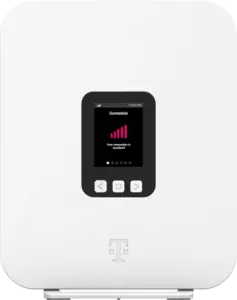Starlink and T-Mobile 5G Home Internet have quickly become main rivals in the rural internet market. Both provide reliable, fast, wireless internet connections and are available in many places that aren’t serviced by cable or fiber internet.
They’re both similar in many ways:
- They’re easy to install and get online right away.
- There are no commitments, so you can cancel service whenever you want without fees.
- They both offer portable options to take high-speed internet on the road.
However, both providers have significant differences. T-Mobile’s availability and price (especially if you’re a mobile customer) make it our recommended choice, but only in an area where you’ll get good reception and speed. We recommend trying it to make sure—T-Mobile has a 15-day trial period and no upfront costs, so you’ve got nothing to lose by trying it.
Starlink is our preferred solution when you’re in the most remote parts of the United States. Plus, T-Mobile isn’t immune to network outages. In contrast, Starlink has a history of few outages as it expands its constellation of satellites. Its speed and latency are comparable to most ISPs, and the ease of use is also a plus. However, for reliability that’s available anywhere, you’ll pay more than most.
Read on for a more in-depth breakdown of the providers and what they do best.


